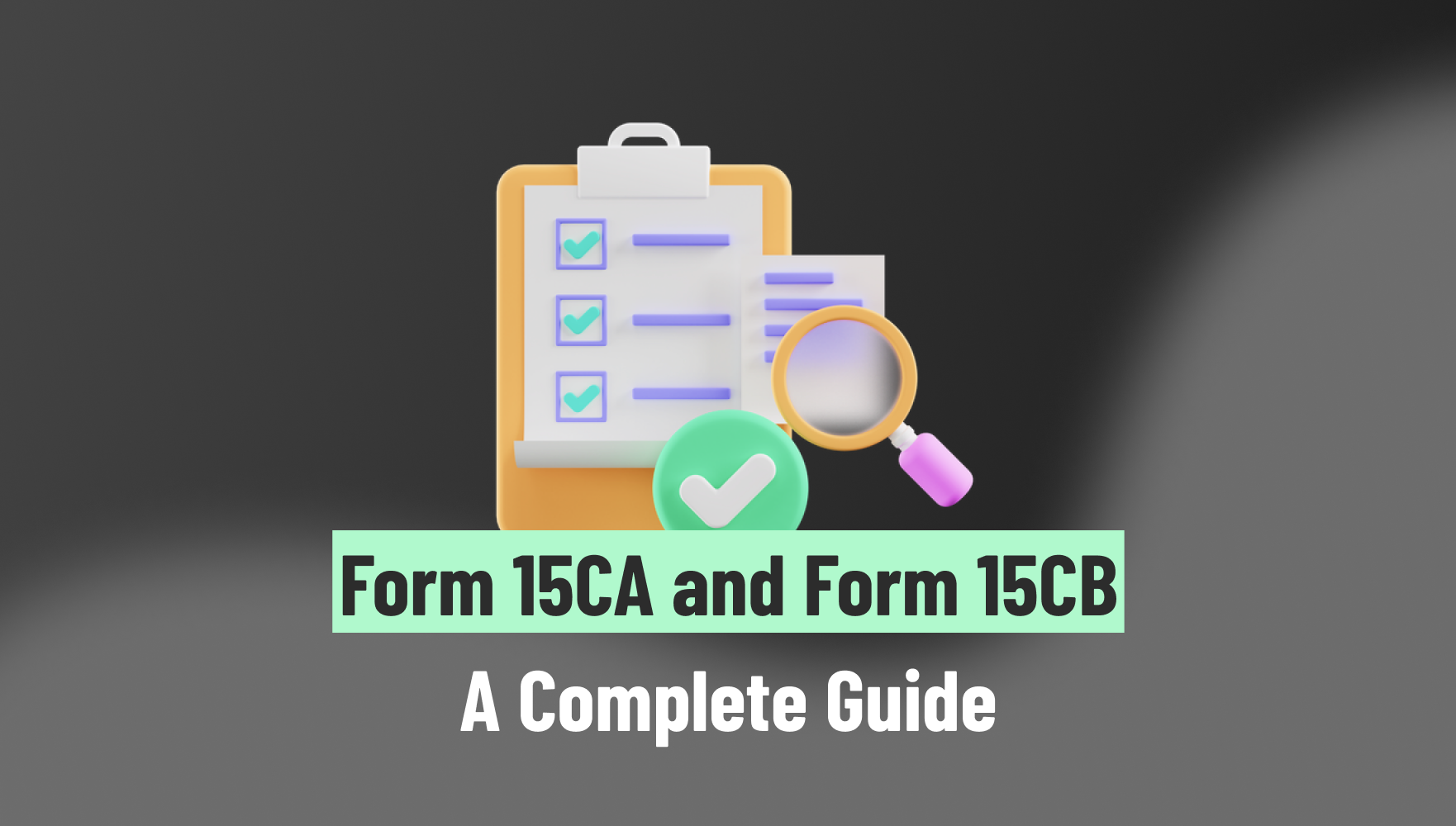Complete Guide to 15CA - 15CB Filing in India: Process, Documents & Fees
When it comes to making payments to non-residents from India, compliance with the Income Tax Act is a must. One of the most essential requirements for this is Form 15CA and Form 15CB. Whether you're a business or an individual making international payments, understanding these forms is critical.
In this guide, we cover everything you need to know — from what these forms are, to filing procedures, documents required, and fees involved.
🔍 What are Forms 15CA and 15CB?
✅ Form 15CA
This is a declaration of remittance made by a resident (payer) to a non-resident (payee). It informs the Income Tax Department about the nature and amount of the payment.
✅ Form 15CB
This is a certificate issued by a Chartered Accountant (CA). It certifies that the payment is by Indian tax laws, and applicable taxes (if any) have been deducted.
🏛️ Legal Background
Under Section 195 of the Income Tax Act, 1961, any person responsible for making a payment to a non-resident is required to deduct tax at source (TDS) unless specifically exempt.
Filing of Form 15CA and 15CB is mandatory before sending money abroad through banks.
📋 When is Each Form Required?
| Scenario | Form 15CA | Form 15CB |
|---|---|---|
| Remittance is not taxable under the IT Act | Yes (Part D) | No |
| Remittance exceeds ₹5 lakh in a FY and is taxable | Yes (Part C) | Yes |
| Remittance is less than ₹5 lakh and is taxable | Yes (Part A or B) | No |
| Covered under the specified list of exempt transactions (e.g., imports) | No | No |
📝 Note: RBI and banks will NOT process foreign remittances without these forms when applicable.
🛠️ Step-by-Step Filing Process
✅ Step 1: Determine Applicability
-
Is the remittance taxable in India?
-
What is the amount?
-
Is it covered under an exempt list?
✅ Step 2: Collect Required Details
-
PAN of payer and payee
-
Nature of remittance
-
Country of remittance
-
Amount and currency
-
Taxability details
✅ Step 3: Get Form 15CB from a Chartered Accountant
-
The CA verifies:
-
Tax residency of the recipient
-
DTAA (Double Taxation Avoidance Agreement) applicability
-
Rate of TDS
-
Whether the PAN of the payee is available
-
✅ Step 4: File Form 15CA on the Income Tax Portal
-
Log in to: https://www.incometax.gov.in/
-
Navigate to e-File > Income Tax Forms > File Income Tax Forms
-
Select Form 15CA and upload the signed Form 15CB (if applicable)
✅ Step 5: Submit to Authorized Dealer/Bank
-
Share Form 15CA acknowledgment
-
Share Form 15CB certificate (if applicable)
-
Provide any other documents requested by the bank
📄 Documents Required
Here’s a checklist:
✅ PAN of remitter and remittee
✅ Invoice or agreement with the foreign party
✅ Nature and purpose of remittance
✅ Bank account details
✅ Form 10F (if DTAA claimed)
✅ Tax residency certificate (TRC) of the payee
✅ Digital signature (for online filing)
✅ Form 15CB (CA Certificate) — if applicable
💰 Government & Professional Fees
| Fee Type | Approximate Amount |
|---|---|
| Government portal fee | ₹0 (no fee) |
| Chartered Accountant fee (Form 15CB) | ₹1,000 – ₹5,000+ |
| Additional documentation or consultancy | Varies based on complexity |
💡 Some CAs or platforms offer combo packages for 15CA + 15CB filing.
⚠️ Penalties for Non-Compliance
Failure to file or incorrect filing can result in:
-
Penalty under Section 271I: ₹1,00,000
-
Delay in remittance or rejection by banks
-
Possible scrutiny by the Income Tax Department
💡 Pro Tips
-
Use the correct Part of Form 15CA (A, B, C, or D)
-
Cross-check DTAA rates before deduction
-
Get professional help for high-value or complex cases
-
Keep records and acknowledgment copies for future reference
🧾 Final Thoughts
Filing Forms 15CA and 15CB is not just a formality — it ensures your foreign payments stay tax-compliant and bank-approved. Whether you’re paying for services, investing abroad, or repaying a loan, timely filing avoids delays and penalties.
If you're unsure, consult a CA or compliance expert to handle the process smoothly.
